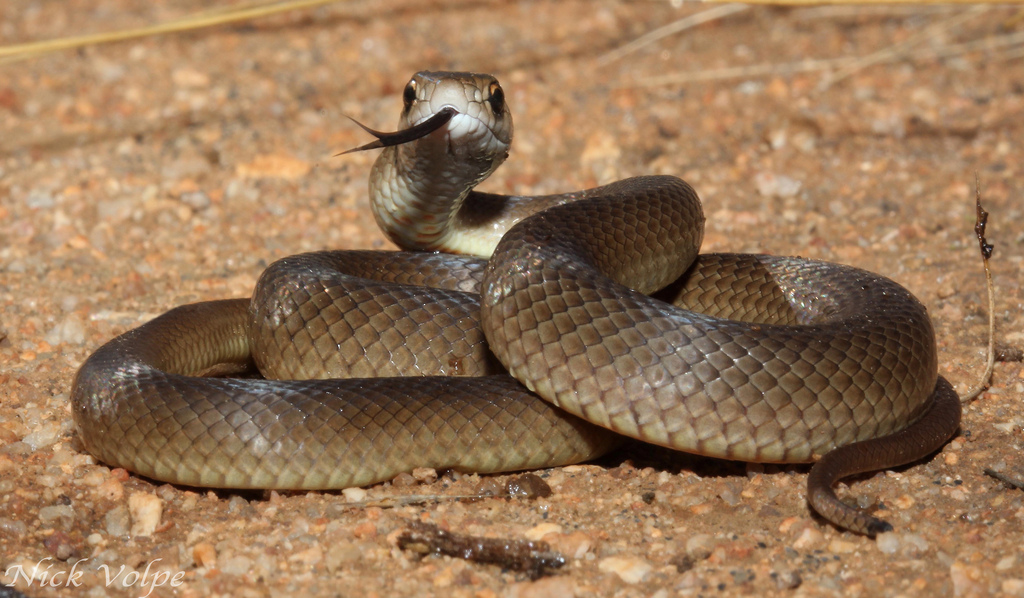
22 Sep Snake Season – What to do if you’re bitten
[fusion_builder_container background_color=”” background_image=”” background_parallax=”none” enable_mobile=”no” parallax_speed=”0.3″ background_repeat=”no-repeat” background_position=”left top” video_url=”” video_aspect_ratio=”16:9″ video_webm=”” video_mp4=”” video_ogv=”” video_preview_image=”” overlay_color=”” video_mute=”yes” video_loop=”yes” fade=”no” border_color=”” border_style=”” padding_top=”20″ padding_bottom=”20″ padding_left=”” padding_right=”” hundred_percent=”no” equal_height_columns=”no” hide_on_mobile=”no” menu_anchor=”” class=”” id=”” type=”legacy” border_sizes_top=”0px” border_sizes_bottom=”0px” border_sizes_left=”0px” border_sizes_right=”0px”][fusion_builder_row][fusion_builder_column type=”1_1″ layout=”1_1″ background_position=”left top” background_color=”” border_color=”” border_style=”solid” spacing=”yes” background_image=”” background_repeat=”no-repeat” padding_top=”” padding_right=”” padding_bottom=”” padding_left=”” margin_top=”0px” margin_bottom=”0px” class=”” id=”” animation_type=”” animation_speed=”0.3″ animation_direction=”left” hide_on_mobile=”no” center_content=”no” min_height=”none” align_self=”flex-start” border_sizes_undefined=”” first=”true” last=”true” hover_type=”none” link=”” border_position=”all”][fusion_text]We are entering the warmer months now, and this means SNAKES ARE BACK! Each year, hundreds, if not thousands, of people are bitten by snakes in Australia which prompts the necessity to give as much crucial information as possible to allow you the best chance of survival. Snakes can be found in any month (if temperatures are right in Winter), but they are most common between about September and May when temperatures are ideal. Above image of an Eastern Brown Snake via Nick Volpe[/fusion_text][fusion_text columns=”” column_min_width=”” column_spacing=”” rule_style=”default” rule_size=”” rule_color=”” content_alignment_medium=”” content_alignment_small=”” content_alignment=”” hide_on_mobile=”small-visibility,medium-visibility,large-visibility” sticky_display=”normal,sticky” class=”” id=”” font_size=”” fusion_font_family_text_font=”” fusion_font_variant_text_font=”” line_height=”” letter_spacing=”” text_color=”” animation_type=”” animation_direction=”left” animation_speed=”0.3″ animation_offset=””]
WHERE ARE YOU MOST LIKELY GOING TO ENCOUNTER A SNAKE?
As a general rule, snakes ideally like to be in temperatures of roughly between 20ºc and 35ºc, any colder and a snake’s body will begin to slow down making it a target for predators, while any hotter and there is a high risk of brain and tissue damage occurring. This makes places such as wilderness, parks, backyards and low lying foliage are ideal for snakes to venture out into. These areas provide good sunlight and areas of shade so a snake can maintain its body temperature. If you are in these areas especially, but realistically outdoors anywhere, its ideal to keep vigilant just in case.
[/fusion_text][fusion_text columns=”” column_min_width=”” column_spacing=”” rule_style=”default” rule_size=”” rule_color=”” content_alignment_medium=”” content_alignment_small=”” content_alignment=”” hide_on_mobile=”small-visibility,medium-visibility,large-visibility” sticky_display=”normal,sticky” class=”” id=”” font_size=”” fusion_font_family_text_font=”Default” fusion_font_variant_text_font=”” line_height=”” letter_spacing=”” text_color=”” animation_type=”” animation_direction=”left” animation_speed=”0.3″ animation_offset=””]
DO’S AND DONT’S IF YOURE BITTEN? – This is only a guide, and every individual case will have its own difficulties and necessities.
In Australia there are roughly 110 land snakes and 32 water snakes. Land snakes are obvious given the warm climate, but water snakes are also a huge hazard as many people flock to pools, beaches, rivers, creeks and waterholes to escape the Summer heat. Not all snakes are venomous, but Australia is known globally for being the home of killers.
[/fusion_text][/fusion_builder_column][fusion_builder_column type=”1_1″ layout=”1_1″ last=”true” spacing=”yes” center_content=”no” hide_on_mobile=”no” background_color=”” background_image=”” background_repeat=”no-repeat” background_position=”left top” hover_type=”none” link=”” border_position=”all” border_color=”” border_style=”” padding_top=”” padding_right=”” padding_bottom=”” padding_left=”” margin_top=”” margin_bottom=”” animation_type=”” animation_direction=”” animation_speed=”0.1″ animation_offset=”” class=”” id=”” border_sizes_top=”0px” border_sizes_bottom=”0px” border_sizes_left=”0px” border_sizes_right=”0px” first=”true” min_height=””][fusion_text][/fusion_text][/fusion_builder_column][fusion_builder_column type=”1_1″ layout=”1_1″ background_position=”left top” background_color=”” border_color=”” border_style=”solid” spacing=”yes” background_image=”” background_repeat=”no-repeat” padding_top=”” padding_right=”” padding_bottom=”” padding_left=”” margin_top=”0px” margin_bottom=”0px” class=”” id=”” animation_type=”” animation_speed=”0.3″ animation_direction=”left” hide_on_mobile=”no” center_content=”no” min_height=”none” align_self=”flex-start” border_sizes_undefined=”” first=”true” last=”true” hover_type=”none” link=”” border_position=”all”][fusion_text]
What SHOULD you do if you’re bitten?
- Place the first broad pressure bandage over the bite as soon as possible. Apply the bandage firmly but not too tight and not too thick over the bite, continue up the limb.
- Apply the second pressure immobilisation bandage just below the bite and continue UP the limb as FAR as can be reached. Apply the bandage firmly but DO NOT cut off circulation.
- Continue to repeat until you have up to five bandages applied ( if they are available ) to achieve complete immobilisation right along the full length of the limb.
- After the last bandage is applied, draw a circle on the bandage at the BITE SITE. The hospital can cut the bandage at the site to swab it in order to get an ID on the snake.
- Apply a splint to IMMOBILISE the bitten limb. It could be a plank of wood, stick etc etc.
- Check circulation in fingers or toes
- Ensure casualty does not move.
- If you are on your own, your smartphone acts as a GPS. Get coordinates.
- CALL 000
Its worth noting that an ambulance should be called as soon as possible, however immobilising the limb is the absolute priority. If there is more than 1 person able to help, 1 should apply bandages while the other calls for help. If you are on your own, then you must do your best to complete these steps solo.
Its also worth noting, these steps apply to animals and while we may not see snakes active, they can easily venture into unseen parts of backyards and can become easy targets.
What SHOULDN’T you do?
- DON’T try to catch the snake – hospitals now have the technology and medical practice to identify snakes through venom swabbing
- DON’T try to suck the venom from the bite!
- DON’T cut the bite area
- DON’T wash the bite
- DON’T try to kill the snake – while you may feel the need to, it will most likely move off, and your energy is best to be saved
[/fusion_text][/fusion_builder_column][fusion_builder_column type=”1_1″ layout=”1_1″ last=”true” spacing=”yes” center_content=”no” hide_on_mobile=”no” background_color=”” background_image=”” background_repeat=”no-repeat” background_position=”left top” hover_type=”none” link=”” border_position=”all” border_color=”” border_style=”” padding_top=”” padding_right=”” padding_bottom=”” padding_left=”” margin_top=”” margin_bottom=”” animation_type=”” animation_direction=”” animation_speed=”0.1″ animation_offset=”” class=”” id=”” border_sizes_top=”0px” border_sizes_bottom=”0px” border_sizes_left=”0px” border_sizes_right=”0px” first=”true” min_height=””][fusion_text]

Red Bellied Black Snake via Stephen Mahony
[/fusion_text][/fusion_builder_column][fusion_builder_column type=”1_1″ layout=”1_1″ background_position=”left top” background_color=”” border_color=”” border_style=”solid” spacing=”yes” background_image=”” background_repeat=”no-repeat” padding_top=”” padding_right=”” padding_bottom=”” padding_left=”” margin_top=”0px” margin_bottom=”0px” class=”” id=”” animation_type=”” animation_speed=”0.3″ animation_direction=”left” hide_on_mobile=”no” center_content=”no” min_height=”none” align_self=”flex-start” border_sizes_undefined=”” first=”true” last=”true” hover_type=”none” link=”” border_position=”all”][fusion_text]
CLICK HERE for a link to the most common snakes within South-East QLD to give you an idea of whats potentially lurking.
[/fusion_text][fusion_text columns=”” column_min_width=”” column_spacing=”” rule_style=”default” rule_size=”” rule_color=”” content_alignment_medium=”” content_alignment_small=”” content_alignment=”” hide_on_mobile=”small-visibility,medium-visibility,large-visibility” sticky_display=”normal,sticky” class=”” id=”” font_size=”” fusion_font_family_text_font=”Default” fusion_font_variant_text_font=”” line_height=”” letter_spacing=”” text_color=”” animation_type=”” animation_direction=”left” animation_speed=”0.3″ animation_offset=””][/fusion_text][/fusion_builder_column][/fusion_builder_row][/fusion_builder_container]


Sorry, the comment form is closed at this time.